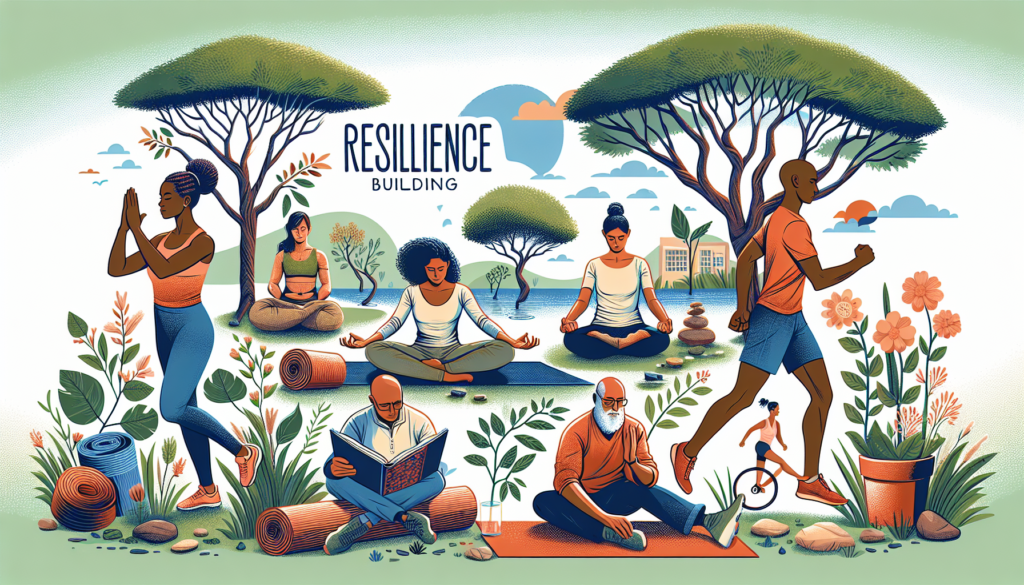Setting Boundaries in Relationships: A Comprehensive Guide
Relationships are complex and multifaceted, encompassing a wide array of emotions, behaviors, and dynamics. One crucial aspect that often determines the health and longevity of a relationship is the establishment of boundaries. Setting boundaries in relationships is a fundamental skill that allows individuals to define their needs, expectations, and limits while also respecting those of their partner. In this article, we will delve into the intricacies of setting boundaries in relationships, exploring its importance, challenges, and impact on overall relationship satisfaction.
The Importance of Setting Boundaries
Boundaries serve as the invisible lines that delineate where one person ends and another begins. They are essential for maintaining a sense of self, fostering mutual respect, and creating a healthy balance in relationships. Without clear boundaries, individuals may feel overwhelmed, taken advantage of, or disconnected from their own needs and desires.
Setting boundaries is not about building walls or creating barriers between partners; instead, it is about establishing guidelines for how individuals can interact, communicate, and navigate conflicts in a respectful and constructive manner. Boundaries help to create a sense of safety, predictability, and trust within a relationship, allowing both partners to feel secure and valued.
Moreover, boundaries can also prevent resentment, misunderstandings, and conflicts from escalating, as they offer a framework for addressing issues and addressing differences in a healthy and productive way. By clearly defining what is acceptable and unacceptable behavior, individuals can protect their emotional well-being and maintain a sense of autonomy within the relationship.
Types of Boundaries in Relationships
There are several types of boundaries that individuals can establish in relationships, each serving a unique purpose and function:
Physical Boundaries
Physical boundaries refer to the physical space and touch limits that individuals set with their partners. This can include personal space, affectionate gestures, and sexual boundaries. For example, a person may establish boundaries around their personal space by requesting alone time or setting limits on physical intimacy.
Emotional Boundaries
Emotional boundaries pertain to the emotional energy, feelings, and vulnerabilities that individuals share with their partners. This can involve expressing one’s needs, setting emotional limits, and maintaining a sense of independence within the relationship. For instance, a person may establish boundaries around sharing personal information or discussing sensitive topics.
Communication Boundaries
Communication boundaries focus on how individuals communicate with each other, including the tone, frequency, and content of their interactions. This can involve setting boundaries around respectful communication, active listening, and conflict resolution strategies. For example, a person may establish boundaries around yelling, name-calling, or interrupting during discussions.
Time Boundaries
Time boundaries involve how individuals allocate their time and prioritize their commitments within the relationship. This can include setting aside quality time for each other, respecting each other’s schedules, and balancing individual and shared activities. For instance, a person may establish boundaries around work hours, social engagements, or personal hobbies.
Financial Boundaries
Financial boundaries revolve around money management, budgeting, and financial responsibilities within the relationship. This can include setting limits on spending, sharing expenses, and discussing financial goals. For example, a person may establish boundaries around joint accounts, major purchases, or financial independence.
Challenges in Setting Boundaries
While setting boundaries is essential for maintaining healthy relationships, it can also pose challenges and obstacles for individuals. Some common challenges in setting boundaries include:
Fear of Conflict
Many individuals struggle with setting boundaries due to a fear of conflict or confrontation. They may worry about hurting their partner’s feelings, being perceived as selfish, or facing rejection. However, avoiding setting boundaries can lead to resentment, frustration, and emotional distress in the long run.
Low Self-Esteem
Individuals with low self-esteem may have difficulty asserting their needs, expressing their boundaries, and advocating for themselves in relationships. They may fear being judged, rejected, or abandoned if they assert their boundaries, leading to a cycle of insecurity and dependence on their partner.
People-Pleasing Behavior
Some individuals engage in people-pleasing behavior, prioritizing their partner’s needs and desires over their own, to maintain harmony and avoid conflict. While this may seem altruistic, it can erode self-esteem, foster resentment, and create an imbalance of power in the relationship.
Boundary Violations
Boundary violations occur when one partner disregards, ignores, or crosses the boundaries set by the other. This can lead to feelings of disrespect, betrayal, and mistrust, undermining the foundation of the relationship. It is essential for both partners to respect and honor each other’s boundaries to foster a healthy and secure connection.
Setting Boundaries in Practice
Setting boundaries in relationships requires self-awareness, assertiveness, and effective communication skills. Here are some practical tips for establishing and maintaining boundaries:
Identify Your Needs
Take the time to reflect on your needs, values, and priorities in the relationship. Consider what behaviors, interactions, and situations make you feel uncomfortable, disrespected, or unheard. This self-awareness will help you establish clear boundaries that align with your well-being and happiness.
Communicate Effectively
Clearly and assertively communicate your boundaries to your partner, using “I” statements to express your feelings and needs. Avoid blaming, shaming, or criticizing your partner, and focus on expressing your boundaries in a respectful and non-confrontational manner. Encourage open dialogue and active listening to ensure mutual understanding and respect.
Enforce Your Boundaries
Consistently reinforce your boundaries through your words, actions, and decisions in the relationship. Be firm and consistent in upholding your boundaries, and do not compromise your values or well-being for the sake of maintaining peace or avoiding conflict. Respect yourself enough to honor your boundaries and expect the same from your partner.
Seek Support
If you are struggling to set or maintain boundaries in your relationship, seek support from a therapist, counselor, or trusted friend. They can provide guidance, validation, and perspective on how to navigate challenging situations and assert your boundaries effectively. Remember that setting boundaries is a skill that can be learned and enhanced through practice and support.
Expert Opinions
According to renowned relationship therapist Esther Perel, setting boundaries is essential for creating a sense of safety, intimacy, and respect in relationships. She emphasizes the importance of clear communication, mutual understanding, and emotional honesty in establishing and maintaining healthy boundaries.
Psychologist and author Bren Brown also emphasizes the significance of vulnerability, courage, and self-compassion in setting boundaries. She believes that boundaries are a manifestation of self-respect and self-care, allowing individuals to protect their emotional well-being and preserve their authenticity in relationships.
Conclusion
In conclusion, setting boundaries in relationships is a vital skill that empowers individuals to define their needs, uphold their values, and cultivate healthy connections with their partners. By establishing clear boundaries around physical, emotional, communication, time, and financial aspects of the relationship, individuals can foster mutual respect, trust, and understanding.
Remember that setting boundaries is not about controlling or manipulating your partner; rather, it is about advocating for your well-being, asserting your autonomy, and ensuring mutual respect and harmony in the relationship. By prioritizing self-care, assertiveness, and effective communication, you can create a fulfilling and balanced relationship built on trust, understanding, and mutual support.
Take the time to reflect on your boundaries, communicate them openly and honestly with your partner, and seek support when needed to navigate challenges and conflicts. Setting boundaries is a continuous process that requires self-awareness, courage, and resilience, but the rewards of a healthy and thriving relationship make it all worthwhile.


